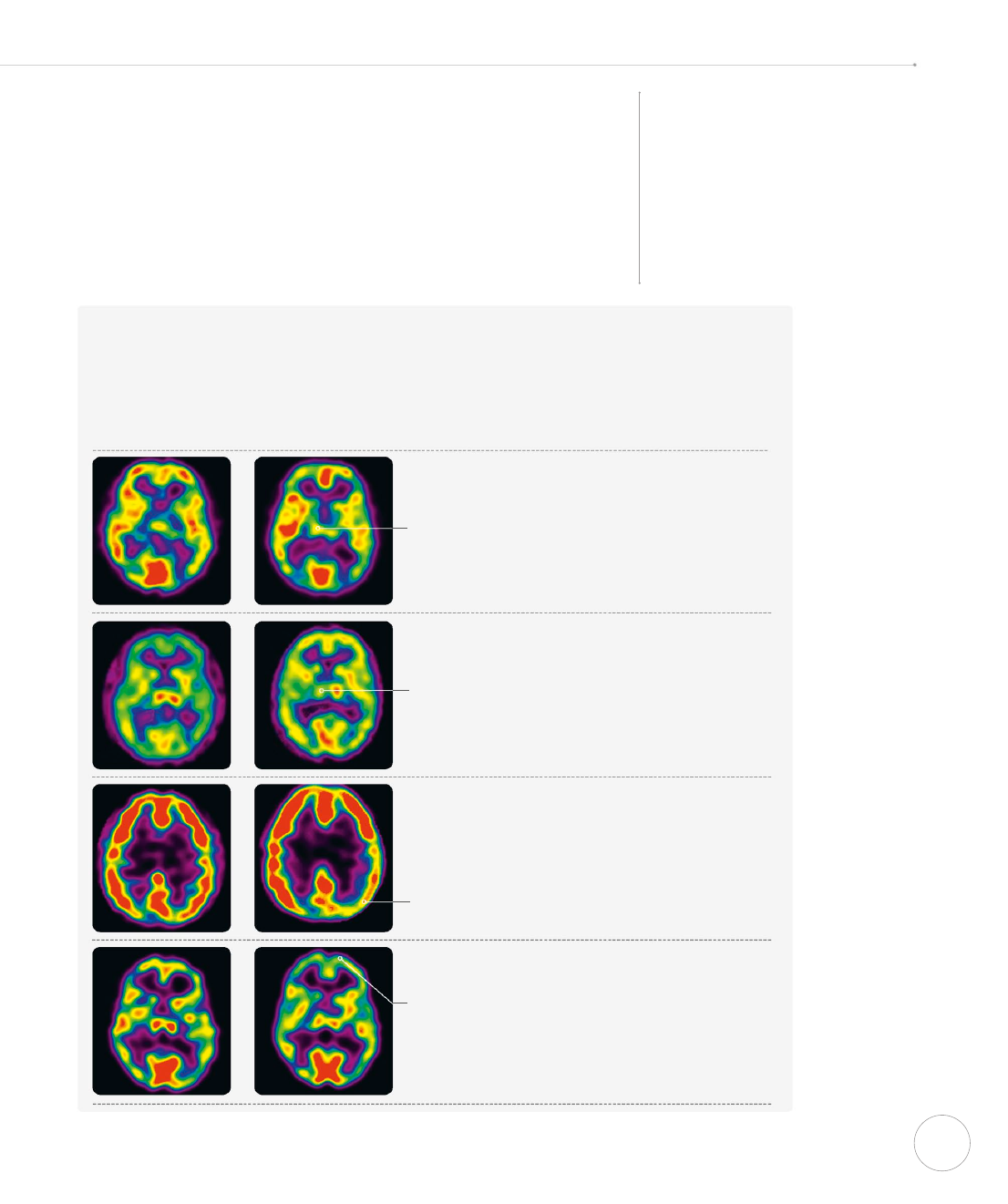
198
QUESTIONS AND ANSWERS
Exercise is the most common reason why people first come to yoga. However,
the spiritual side of yoga often becomes more important for those who continue
to practice. With advances in technology including neuroimaging, researchers
are now exploring yoga’s potentially transformative spiritual effects.
TRANSFORMATION
Neuroscientists
are now studying
the brain during
spiritual states.
2
SELF-
REGULATION
(NIYAMAS)
5
CONTROLLED
SENSES
(PRATYAHARA)
8
ENLIGHTENMENT
(SAMADHI)
7
MEDITATION
(DHYANA)
1
SELF-CONTROL
(YAMAS)
3
POSES AS
EXERCISE
(ASANAS)
6
CONCENTRATION
(DHARANA)
4
BREATHWORK
(PRANAYAMA)
YOGA
THE EIGHT LIMBS OF YOGA
The ultimate aim of the eight
limbs of yoga is to help us live a
meaningful life. Not all modern
classes incorporate them, but
many at least allude to this
depth and potential.
Q
What are the spiritual states
that ancient yogis spoke of?
The “eight limbs” of yoga are
outlined in an ancient text called
the “Yoga Sutras.” The first four
limbs concern how we live in the
external world, and are intended
to prepare your body and mind for
the second four, which concern
our internal world or consciousness
(see below).
Astronauts undergo a similar
process to the eight limbs of
yoga: from an ethical code
to intensive
physical
exercises to prepare the body and
mind. When in space, “Earth gazing”
is reportedly so captivating that
astronauts spend hours just staring
at the planet. This can be seen as
similar to yogic concentration
(dharana) exercises, such as staring
at the flame of a candle to improve
concentration and eventually evoke
higher states of consciousness.
According to a 2016 paper called
“The Overview Effect: Awe and
Self-Transcendent Experience in
Space Flight,” astronauts return to
Earth with a new perspective and
sense of purpose. The founder of
Phoenix Rising Yoga Therapy,
Michael Lee, believes we can
experience the same transformation
on Earth by exploring the last four
limbs of yoga.
US_198-199_Transformation.indd 198 02/11/2018 14:06

199
Q
How can we study the effects
of spirituality?
Neuroscientists are now studying
the brain during spiritual states,
with fascinating findings. American
neuroscientist Dr. Andrew Newberg
from the Marcus Institute of
Integrative Health, for example,
uses neuroimaging to understand
higher spiritual states, including
spiritually based meditative states
such as Samadhi, deep prayer
practices, and some drug-induced
spiritual experiences (see below).
Four common brain patterns in spiritual experiences
Dr. Newberg has compared the brain at rest and during transcendent spiritual
experiences, including Samadhi, to identify specific brain activity patterns
associated with spirituality.
AT REST
DURING SPIRITUAL
EXPERIENCE
Increased
activity in the
limbic system
Decreased
activity in the
left thalamus
Decreased
activity in
the posterior
parietal lobe
Decreased
activity in the
frontal cortex
INTENSITY
Increased activity in the limbic system
may account for the intense emotional
states that people often feel during spiritual
experiences. This increase is also likely
to make such experiences memorable
and life-changing.
CLARITY
The thalamus is a relay center that
helps us integrate sensory information
to construct our sense of reality.
Decreased activity here may result in
a sense of increased clarity.
UNITY
The posterior parietal lobe is in charge of
spatial orientation. A decrease in activity
here may reduce the feeling of being
physically separate from what is around
us, creating a sense of unity and a lack
of boundaries.
SURRENDERING OF SELF
Though many meditation practices
increase activity in the frontal cortex due
to the increase in concentration and
regulation, spiritual states such as Samadhi
may turn off the frontal cortex, the seat
of the will, leading to a sense of
surrendering to what is.
INTERPRETATION
US_198-199_Transformation.indd 199 02/11/2018 14:06
..................Content has been hidden....................
You can't read the all page of ebook, please click here login for view all page.
